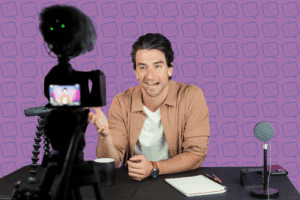The Power of Comedy on Social Media

Many brands may have recently taken a humorous approach to their social media presence. The comedic tone works well for Netflix, Wendy’s, and Old Spice. Whether they are interacting with Twitter users or creating memes to repost, some brands have that funny factor and use it to their advantage.
Because of the success of big brands using comedic strategies, you might be thinking, “Why does it work so well? Would that work for my brand?” There isn’t one answer regarding if your brand should pick up a playful tone, but here are a couple of reasons it works:
It gives your brand a personality.
How often have you found a brand on Twitter or Instagram and been bored by the content they chose to publish? It’s a pleasant surprise to see a brand online retweeting memes that are relevant to them and funny. We all joke around, so why are we expecting brands (that are run by people who also joke around, probably) to be robots?
Seeing that a brand can be lighthearted and have fun is refreshing. By showing their humorous side, brands can show that they are just like their consumers. It humanizes them and entices consumers to follow them and get to know the brand and products they make.
Funny content performs well.
Luckily for brands, being funny online is still a new concept. People aren’t used to how human brands can show that they are through comedy. If you understand your target audience, it is easy to make hilarious branded content that gets passed around.
For example, Netflix has nailed the art of tweeting and retweeting relevant memes. In a tweet, Twitter user rueisreading posted a screengrab of Lady Gaga’s livestream, paired with the caption, “me closing my eyes every time georgia does something illegal bc she’ll always be innocent to me #ginnyandgeorgia.” Netflix retweeted this post.
Though it isn’t its original content, Netflix understands what its audience finds funny and can keep up with internet slang and trends. They knew that their followers would find this tweet relatable and funny, and they used user-generated content to their advantage. The people at Netflix continue to show that they don’t shy away from funny content.
Everyone loves a bit of comedy.
Unless it is misplaced or inappropriate, anyone can appreciate a funny post. Research suggests that laughter feels good, but shared laughter brings people together and helps strengthen relationships. Creating or sharing funny content brings your audience closer to each other and to your brand.
The same research indicated that participants felt a sense of togetherness because they laughed at the same videos and viewed the world similarly. By creating this content, brands can show the audience that they might also have similar views.
A by Rutgers suggests that because comedy draws people in, brands can call attention to fundamental issues worldwide. While some once thought that comedy couldn’t be serious or communicate real problems, it helps draw an audience and keeps them around. This strategy can prove to be helpful in marketing as well.
In conclusion…
A comedic approach to an online presence isn’t the correct move for every brand. Some brands should maintain a more professional or serious tone. Though it’s not for everyone, it is beneficial to take a step back and rethink your social media voice. Be cautious of your audience; maybe comedy can be integrated into your social media strategy too!





